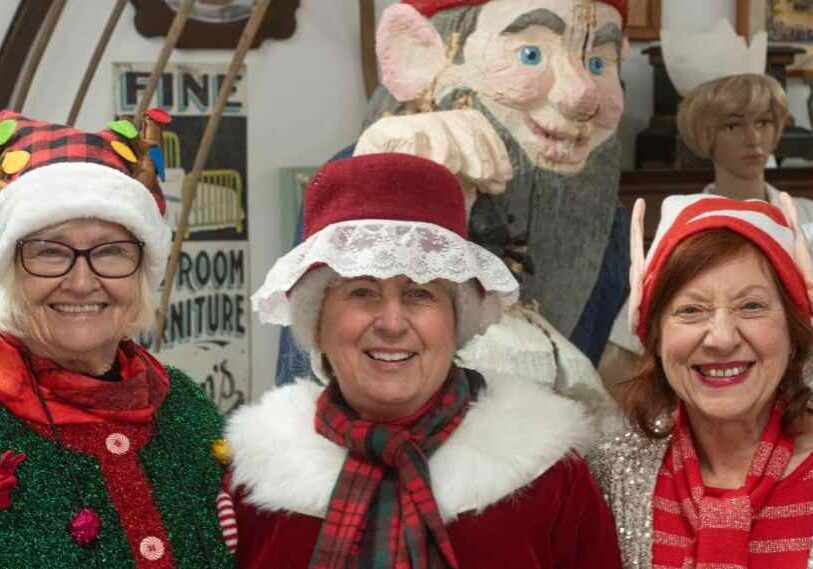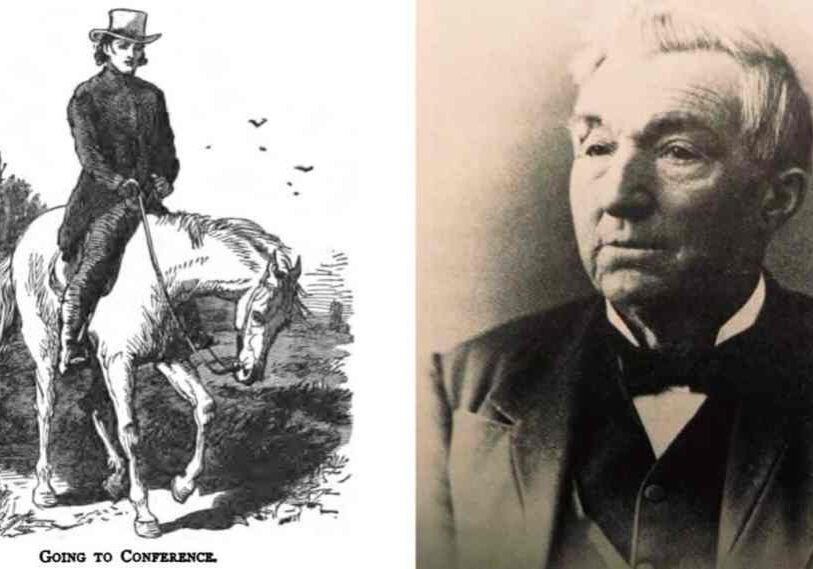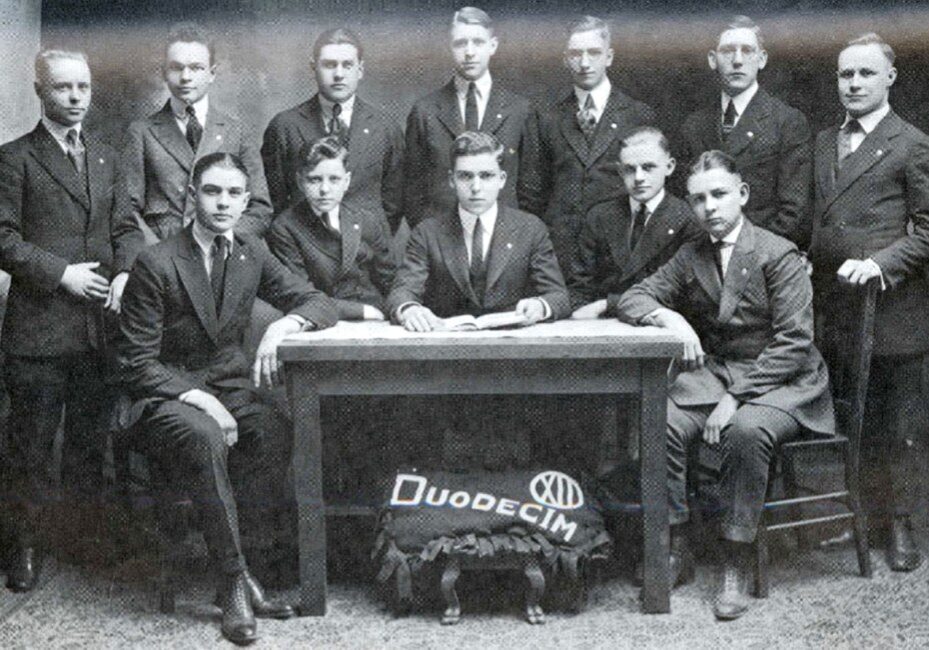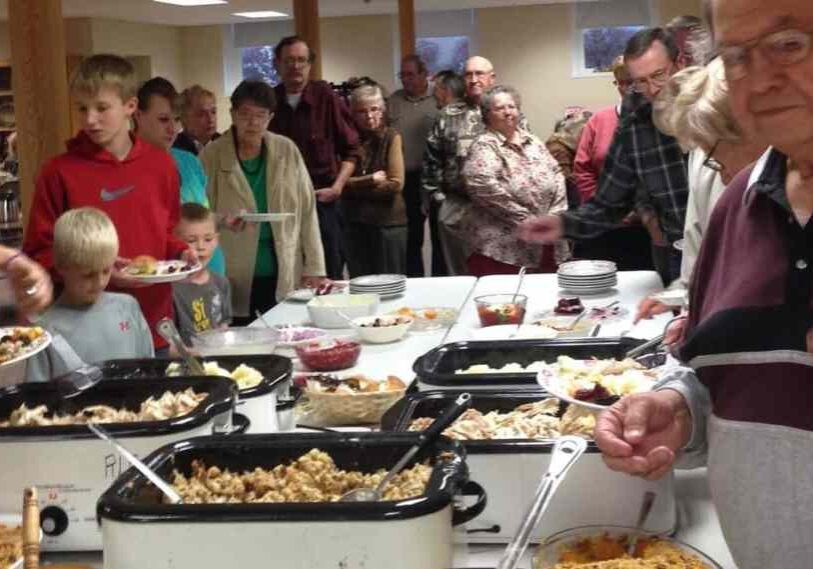Christmas in Norway: A Minnesotan’s Yuletide Greeting for the Season

NORWAY — Remember those charming holiday cards with snowy Christmas scenes that seem to exist only in the imagination, especially now that global warming has made even places like southeast Minnesota less predictably snowy?
Well, I have found that place, and it is called Norway!
I am here as a student in a one-year international program in Norwegian Folk Music at the University of South-Eastern Norway’s Rauland campus.

Students dancing at the end-of-term Christmas dinner in Rauland. (Photo by Drue Fergison)
Rauland is in Norway’s Telemark region, a 3-hour drive almost due west from Oslo, on the shores of Lake Totak, a huge sea-like lake that is the 11th deepest in Norway. It is the snowiest part of Norway, with multiple ski resorts nearby, 150 kilometers of dedicated cross-country skiing trails and 45 minutes from Morgedal, considered the “birthplace” of downhill skiing.
It would be impossible to do justice in words to the natural beauty of this place, surrounded by majestic hills, mossy bog woodland with wild heather, blueberries, lingonberries, and raspberries and the kind of mushroom you normally associate with trolls—bright red with white dots—and very poisonous.
But as spectacular as it was this past autumn, now that we are getting deep into snow, it is even better. The Norwegian expression “there is no such thing as bad weather, only bad clothing” is taken seriously, as people are out walking in all weather.

Lighted star and candle, with heather, hang in a window in Rauland. (Photo by Drue Fergison)
As the days have shortened, getting light around 9:00 a.m. and dark around 4:00 p.m., the ever-present candles have become even more omnipresent.
In windows, you see lighted Christmas stars, real candles, and electric candelabras burning at all hours.
Christmas trees and wreaths are for sale—and at the grocery store, many products for baking, and candles, candles, and more candles.

A 3:00 p.m. winter sunset view from the Austbø Hotell in Rauland, just before our Julebord feast. (Photo by Drue Fergison)
It is easy to see where so many American Christmas traditions come from. Take cookies, for example. In Norway, it is traditional to bake a set of seven different cookies, called the syv slags, and often including sirupssnipper, Berlinerkranser, sandkaker, krumkaker, smultringer, goro, and fattigmann.
Christmas and Advent everything
But what has really been fascinating to me is all the Norwegian Christmas traditions I never knew about and could never have imagined.

Hot-from-the-oven home-baked cinnamon rolls getting eyeballed at the Christmas Market on campus in Rauland, Norway. (Photo by Drue Fergison)
For example, every brewery brews its own Christmas beer, and every soda manufacturer makes its own Christmas soda. Apparently, the rivalry and competition are fierce (and sometimes ugly) to earn the title of best brew.
And virtually every item in the grocery store has its own Christmas version—Christmas ham, Christmas hot dogs, Christmas meatballs. Not to be outdone, Christmas marzipan is everywhere in various forms including the classic marzipan pig.
Advent calendars are also everywhere with the usual kids’ iterations—and then there are adult versions including an Advent aquavit ‘calendar’ with 24 level markings on the bottle to show how much you should drink down each day. Yes, this is a great idea and, no, I did not make it up. It’s right up there with the plastic flasks of “hunting” and “hiking” aquavit.

Just a sampling of the many Advent television series shown on national broadcaster NRK. (Photo by Drue Fergison)
Like in the United States, there is a full set of Christmas movies often watched by the entire country, possibly on 23 December, otherwise known as “little Christmas Eve”.
In keeping with the Advent theme, the national broadcaster, NRK, has an entire webpage devoted to numerous Advent dramas, on all sorts of themes, where you watch one episode per day. To preserve the important Advent theme of waiting, which is taken very seriously here, each day’s episode is only released on its appropriate day, meaning that you cannot binge watch them in advance.

Traditional holiday store offerings at a Norwegian grocery store. (Photo by Drue Fergison)
Sheep’s hHead and other culinary delights
Another hotly contested topic is what to eat for Christmas Eve dinner, which is the main celebratory meal throughout Europe. Surveys have even been conducted showing which percentage of the population eats pinne (short for pinnekjøtt—dry-cured ribs of lamb) and which percentage eats ribbe (pork ribs or pork belly, bone in).
In addition, lutefisk, boiled cod, roast ham, and turkey are also common. We cannot forget that other favorite: sheep’s head.
On the sheep farm where I am living, the owner has had his lamb ribs curing in the barn for a while now. And soon he will take them down to be prepared for pinnekjøtt.

The Julebord appetizer table at the Austbø Hotell. (Photo by Martha Levenson)
My fellow international classmates and I were able to try many of the traditional foods at a Julebord at the local Austbø Hotell. This is a pre-Christmas ritual, often involving a work-gathering (aka “the office Christmas party”) where it is acceptable to get as drunk as possible, do and say stuff you otherwise never would to your colleagues, and stay out until the wee hours in a “what happened at the julebord stays at the julebord” kind of magical protective veil.
At our Julebord, none of this happened, of course, but we were able to try ribbe, Christmas meatballs seasoned with cinnamon, red and white cabbage, and an array of salads, pickles, breads, salmon, shrimp and other appetizers.
We were all stuffed, but the dessert was absolutely as good as I’ve seen it described. Leftover Christmas rice porridge (risgrøt – often eaten on Christmas Eve Day) is mixed with cream, and then topped with fresh, bright red, strawberry sauce.

Serving “elf” holding a bowl of warm Christmas rice porridge at the Christmas Market on campus in Rauland, Norway. (Photo by Drue Fergison)
Porridge, porridge, and more porridge
And while we’re on this subject, the Norwegians have a thing about porridge—from the traditional rømmegrøt that is known in the U.S., to the rice porridge of Christmas, to any other kind of porridge you might imagine.
Apparently, this goes back to the Viking Era. There was even a “Norwegian Porridge Feud” from 1864 to 1866 with public debates about how best to cook porridge.
We might all agree, though, that there really is nothing simpler, or more comforting, than a warm bowl of porridge. In fact, this is what kids leave for Santa (and the garden nisse) and was served at the annual Christmas Market held on our campus.

Snowy view of part of the Christmas Market held on campus in Rauland. (Photo by Drue Fergison)
So, the next time you pick up one of those idyllic snowy holiday cards and kind of roll your eyes, just think of Norway, the perfect Christmas land. God Jul.






